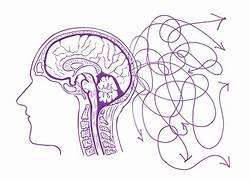The Nurturing Young Minds: Early Identification and Intervention Techniques for Pediatric Neurological Disorders

Children's growth and general well-being can be greatly impacted by neurological conditions. Attention-deficit/hyperactivity disorder (ADHD) to autism spectrum disorder (ASD) and beyond, these disorders frequently bring special difficulties that need for early identification and treatment.
This blog will go over the need of early neurological disease diagnosis in children and practical assistance and intervention techniques.
Comprehending Child Neurological Disorders
Children's neurological problems include a wide range of diseases affecting the brain and nervous system. Behavioral problems, learning disabilities, developmental delays, and poor social interaction are among a few ways these illnesses might show up.
Among children's most prevalent neurological conditions are:
- Autism Spectrum Disorder (ASD): ASD, or autism spectrum disorder, is a developmental condition marked by communication, social interaction, and repetitive behavior issues. Early childhood is frequently when it first appears, and it can be minor or severe.
- Attention-Deficit/Hyperactivity Disorder (ADHD): ADHD, or attention-deficit/hyperactivity disorder, is a neurodevelopmental condition marked by impulsivity, hyperactivity, and inattention. Children with ADHD could have trouble paying attention in class, following directions, and reining in their urges.
- Learning Disabilities: A variety of disorders might impact a child's capacity to pick up and use academic skills. These could be dyslexia, which is a reading disability; dyscalculia, a math disability; and dysgraphia, a writing disability.
- Intellectual Disabilities: Intellectual impairments refer to restrictions in both adaptive behavior and intellectual functioning. A child's learning, communication, and daily activities can all be greatly impacted by these impairments.
Strategies for Early Detection and Intervention
Maximizing results and raising the quality of life for kids with neurological diseases depend on early identification and intervention. Following are some useful tactics:
- Developmental Screening: Early identification of possible neurological diseases can be facilitated by routine developmental screens during well-child visits. Standardised screening instruments are used by healthcare professionals to evaluate developmental milestones and point up any problems.
- Knowledge and assistance for Parents: Recognizing and comprehending the symptoms of neurological diseases in their children requires parents to receive knowledge and assistance. Programs for parent education can enable carers to speak out for the needs of their children and get the right tools and services.
- Multidisciplinary Assessment: Children who appear to have a neurological condition should have a thorough assessment conducted by a multidisciplinary team of medical specialists. Among these could be pediatricians, psychologists, occupational therapists, speech-language pathologists, and special educators.
- Early Intervention programs: These programs are intended to help children with neurological conditions learn and grow from birth to three years old. Speech, occupational, physical, and developmental therapies catered to the specific need of the child may be part of these services.
- IEPs, or individualized education plans, and 504 plans: IEPs and 504 Plans can offer modifications and support services to school-age children with neurological conditions in order to meet their particular learning requirements. These plans specify the particular objectives, tactics, and modifications to support kids' social and academic success.
- Behavioral Interventions: Applied behavior analysis (ABA) is one of the behavioral interventions that can assist kids with neurological conditions learn new skills, behave better, and have better social interactions. Many times, these therapies are customized to meet the unique requirements and talents of every youngster.
Support Resources for Families:
Families with children who have neurological conditions can gain by having access to community networks and support services. Resources of great value include:
- National Institute of Neurological Disorders and Stroke (NINDS): The National Institute of Neurological conditions and Stroke (NINDS) offers patient assistance, treatment alternatives, and information on a range of neurological conditions.
- Autism Speaks: Leading campaigning group committed to raising knowledge about, compassion for, and acceptance of autism spectrum condition is Autism Speaks. For people and families touched by autism, their website provides tools, information, and community support.
- CHADD (Children and Adults with Attention-Deficit/Hyperactivity Disorder): Children and Adults with Attention-Deficiency/Hyperactivity Disorder, or CHADD, provides advocacy, education, and support to those with ADHD and their families. They offer tools, internet discussion boards, and neighborhood support groups where people may connect and exchange experiences.
CONCLUSION
Neurological problems in children bring special difficulties that need for early identification, treatment, and assistance. Families can support children with neurological conditions so they can flourish and realize their full potential by identifying the warning indicators of these conditions, offering early intervention services, and gaining access to the right support networks. Every child can thrive and achieve with the appropriate plans and support system in place.
What's Your Reaction?


















